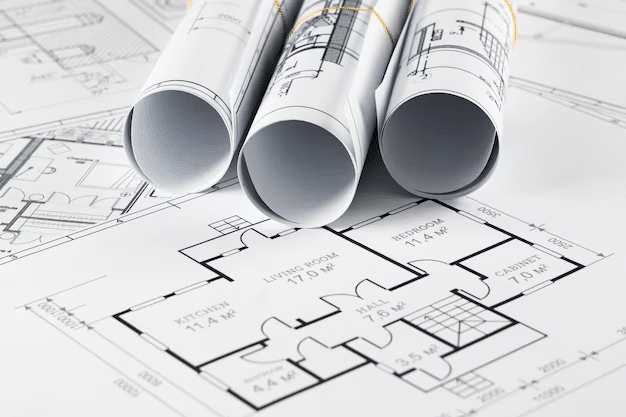When it comes to printing architectural and engineering drawings, choosing the right paper type is crucial. If you are looking for where to print in Nigeria, our professionals are here and ready to help. The type of paper you choose can affect the quality and legibility of your drawings, as well as their durability over time. As an architect or engineer, you want to ensure that your printed drawings will not only look professional but also withstand the test of time.
In this article, we will discuss the factors to consider when choosing paper for architectural and engineering drawings, the popular types of paper available, and how to choose the right paper for your specific project.
But first, let’s see the various paper options available…
Popular Paper Types for Printing Drawings
Several types of paper are commonly used for printing architectural and engineering drawings. Understanding the properties of each type of paper can help you select the best option for your project. Here are the most popular types of plotter papers for architectural and engineering drawings:
1. Bond paper
This is the most common type of paper you have seen. It is a high-quality, lightweight paper that is easy to handle and can be used for both black and white as well as colour printing. Bond paper is ideal for printing large format drawings, such as plans and elevations, and is available in a range of weights and sizes.
2. Gloss paper
Gloss paper is a high-quality paper with a shiny and reflective surface that makes colors and lines appear vibrant and sharp. Gloss paper is ideal for printing drawings that require high-quality images. Gloss paper can enhance the color saturation, contrast, and sharpness of the printed image, producing a vibrant and eye-catching result.
3. Matte Paper
Unlike gloss paper, which has a shiny, reflective surface, matte paper has a more subdued appearance with a softer texture. It is often used in printing photographs, art prints, and documents that require a more professional, sophisticated look. Matte paper is a versatile and popular choice for a wide range of printing applications providing a high-quality, professional-looking result with a subtle, sophisticated finish.
4. Tracing paper
Tracing paper is a thin, translucent paper that is often used for preliminary drawings and sketching. It is not suitable for final printing but can be used for tracing and drafting purposes.
Each type of paper has its unique properties, advantages, and disadvantages. By understanding the differences between them, you can choose the best paper for your specific project needs.
Factors to Consider when Choosing Paper for Architectural and Engineering Drawings
Using the right paper for your drawings offers numerous benefits, such as ensuring that your drawings are easy to read and that their colors remain vibrant. Additionally, the right paper can enhance the overall presentation of your work and help to convey your design intent more clearly to clients and collaborators.
Here are some key factors to consider when selecting paper for printing architectural and engineering drawings:
1. Weight
The weight of your paper will determine its thickness and sturdiness. For architectural and engineering drawings, it’s recommended to use a paper weight of at least 24 lb. bond (90gsm) for inkjet plotters, and 20 lb. Bond (75gsm) for laser plotters. Heavier weight paper may be necessary for larger or more detailed drawings, as it will provide better support and reduce the risk of tearing or curling.
2. Size
The size of your paper will depend on the type of plotter you’re using and the size of your drawings. See our paper sizes here. It’s important to choose a paper size that is compatible with your expected objectives i.e. making large legible prints for use on construction project sites any printing errors or wasted paper.
3. Colour
The colour of your paper can impact the contrast and visibility of your drawings. For most architectural and engineering drawings, it’s recommended to use white paper as it provides the highest contrast and visibility for black ink. However, coloured paper may be necessary for specific types of drawings or presentation styles.
Also, it’s important to keep in mind the purpose and end use of the drawing. For example, if the drawing will be used for presentation purposes, then a high quality paper is your best friend in ensuring that the colors and lines are sharp and clear.
In conclusion
Choosing the right paper for your architectural and engineering drawings is essential for ensuring that your work is of the highest quality and can provide the intended value to you and other users.
By taking into account the factors discussed in this article, such as paper weight, size, and colour, as well as the purpose of the drawing, you can make an informed decision when selecting paper for your project.
Choose the right partners for efficiency. Contact PrintMyDrawings for the following printing needs
- Architectural Design Drawings
- Construction Detail Drawings
- Electrical Drawings
- Engineering Drawings
- Mechanical Drawings
- Business Documents
-
Starting at ₦799.99 ₦799.99 – ₦7,999.99 Add to Cart This product has multiple variants. The options may be chosen on the product page
-
Starting at ₦1249.99 ₦1,249.99 – ₦15,999.99 Add to Cart This product has multiple variants. The options may be chosen on the product page
-
Starting at ₦599.99 ₦599.99 – ₦2,399.99 Add to Cart This product has multiple variants. The options may be chosen on the product page
-
Starting at ₦1874.99 ₦1,874.99 – ₦23,999.99 Add to Cart This product has multiple variants. The options may be chosen on the product page
-
Starting at ₦3999.99 ₦3,999.99 – ₦47,999.99 Add to Cart This product has multiple variants. The options may be chosen on the product page







